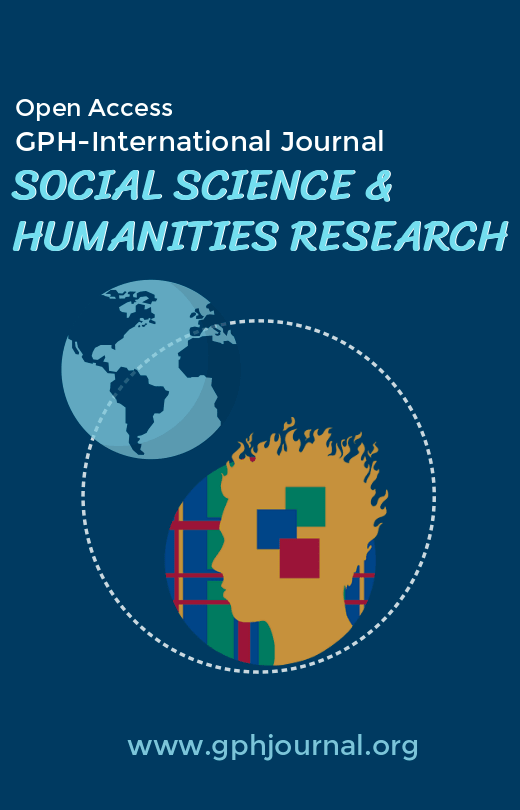Family planning services provided by healthcare providers in the Bamenda Health District Cameroon
Abstract
Family planning is one of the ways through which maternal deaths can be reduced. Studies have shown that up to 40% of maternal deaths could have been averted through the use of family planning services.
Objective: The objective of this study was to assess the available family planning services offered to the population of the Bamenda Health District by health care providers.
Method: A multistage cross-sectional, descriptive study design was used where data was collected at a point in time. The study population constituted all health workers (Nurses and midwives), randomly selected from the Bamenda Health District. Data were collected from randomly selected health facilities from the 13 health areas of the Bamenda Health Districts with the use of a semi-structured questionnaire. Data analysis was done using SPSS version 21.
Result: The result showed that only 36.4% of respondents offer all the aspects of family planning. Based on the types of family planning services available, there were three aspects of family planning services they know: Contraceptive services (27.1%), pregnancy Testing and Counselling (6.4%), and Sexually Transmitted Disease services (3.6%). The most used services by clients were the provision of contraceptives (48.6%) and premarital counseling/preconception care (31.4%). Family planning services least used by clients were sexual and reproductive health education (21.4%), sex determination (27.9%), and breast/cervical cancer screening (7.1%). Success has been made in FP such as reduced unwanted pregnancy and abortion (69.3%) and greater spacing between births, reducing the risk of infant and child mortality (10%).
Conclusion: all health centers and hospitals, should consider all aspects of family planning services as an integral part of maternal and child health with Primary Health Care services at all levels to ensure the provision of complete Family Planning services. This will improve the uptake of family planning services by the population.
Downloads
References
Ola F, Tsui A. Advancing family planning research in Africa. Afr J Reprod Health. 2014;14(4 0 0):9–12.
Speidel JJ, Thompson KMJ, Harper CC. Family Planning: Much Progress But Still Far To Go. Solutions. 2014. 4: 54–61.
Trends in maternal mortality: 2000 to 2017: estimates by WHO, UNICEF, UNFPA, World Bank Group and the United Nations Population Division. Geneva: World Health Organization; 2019.
Ahmed S, Li Q, Liu L, Tsui AO. Maternal deaths averted by contraceptive use: an analysis of 172 countries. 2012.Lancet 380: 111–125. doi: 10.1016/S0140-6736(12)60478-4 PMID: 22784531.
United Nations, Department of Economic and Social Affairs, Population Division (2015). Trends in Contraceptive Use Worldwide 2015 (ST/ESA/SER.A/349).
UNFPA. Adding it up it: The Costs and Benefits of Investing in Sexual and Reproductive Health 2014. Guttmacher Institute.
Darroch JE, Singh S. Trends in contraceptive need and use in developing countries in 2003, 2008, and 2012: an analysis of national surveys. 2013. Lancet 381: 1756–1762. doi: 10.1016/S0140-6736 (13)60597-8 PMID: 23683642.
Cohen SA, Richards CL The Cairo Consensus: Population, Development and Women. Fam PlannPerspect (1994). 20: 150–155.
United Nations Population Fund (2000). Millennium Development Summit of the United Nations6 September 2000 - 8 September 2000. New York, United States
Brown W, Druce N, Bunting J, Radloff S, Koroma D, Gupta S, et al. Developing the “120 by 20” Goal for the Global FP2020 Initiative. Stud Fam Plann 2014. 45: 73–84. doi: 10.1111/j.1728-4465.2014. 00377.x PMID: 24615576.
Gavin L, Moskosky S, Carter M, Curtis K, Glass E, Godfrey E, et al. Providing quality family planning services: Recommendations of CDC and the U.S. Office of Population Affairs. MMWR Recomm Rep 2014. 63: 1–54.
Simon A., Seraphin F., Micyline T., Robert L. Reproductive health in Cameroon. Geneva Foundation for Medical Education and Research. 2021.
Sonfield A et al., The Social and Economic Benefits of Women’s Ability to Determine Whether and When to Have Children, New York: Guttmacher Institute, 2013.
Megan L. Kavanaugh and Ragnar M. Anderson (2013). Contraception and Beyond: The Health Benefits of Services Provided at Family Planning Centers. Guttmarcher Institute.
World Health Organization. Unmet need for family planning.2015. https://www.who.int/reproductivehealth/topics/family_planning/unmet_need_fp/en/.
Copyright (c) 2022 David Ayem, Kimbi Helen, Fomba Emmanuel, Mary Bi Suh Atanga

This work is licensed under a Creative Commons Attribution-NonCommercial-NoDerivatives 4.0 International License.
Author(s) and co-author(s) jointly and severally represent and warrant that the Article is original with the author(s) and does not infringe any copyright or violate any other right of any third parties, and that the Article has not been published elsewhere. Author(s) agree to the terms that the GPH Journal will have the full right to remove the published article on any misconduct found in the published article.





























